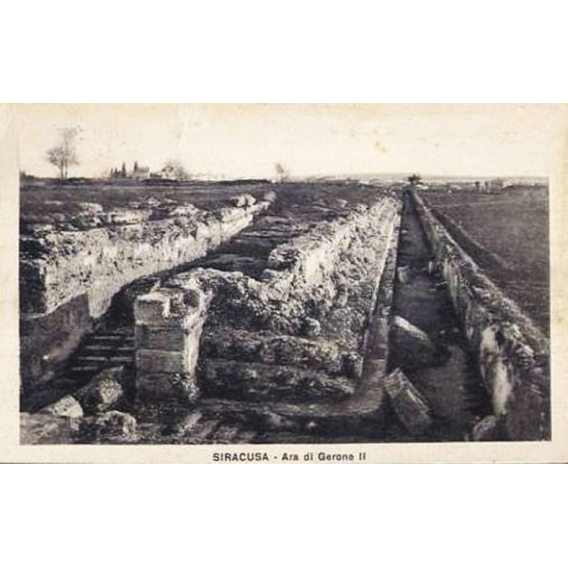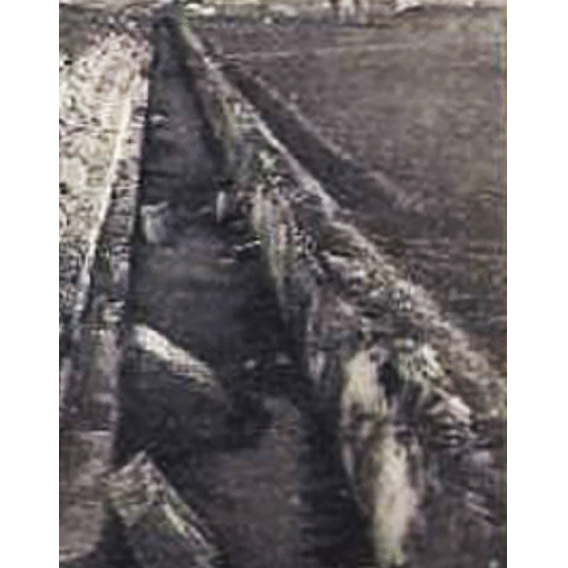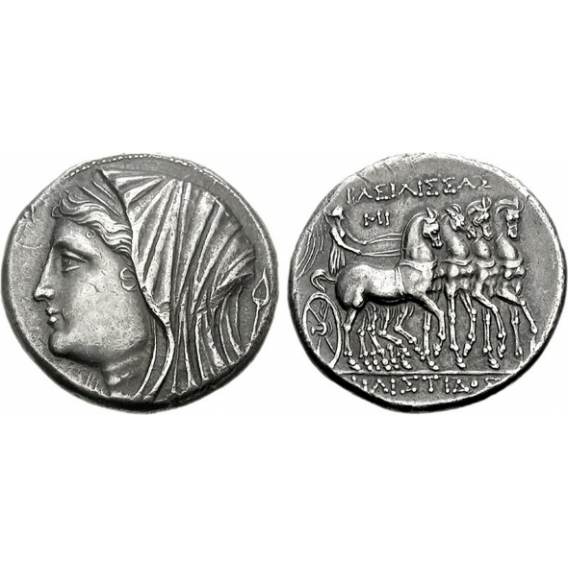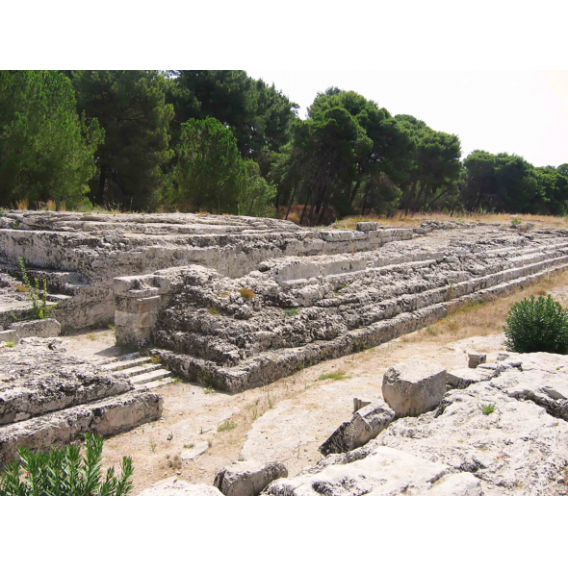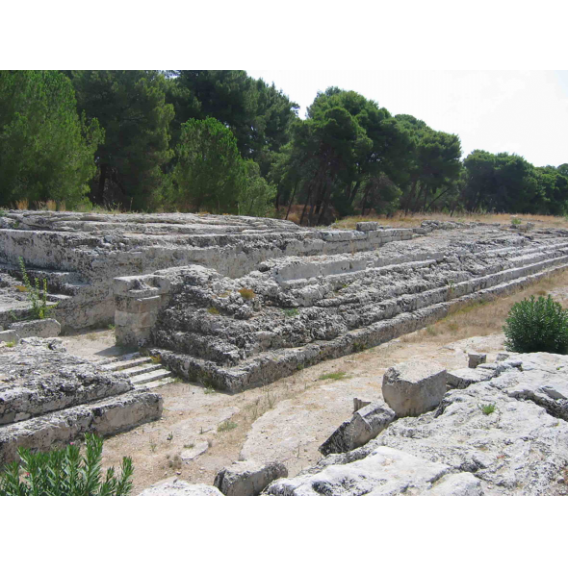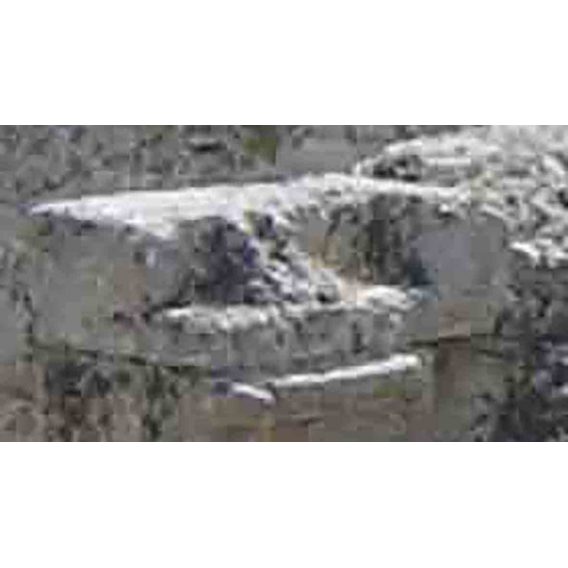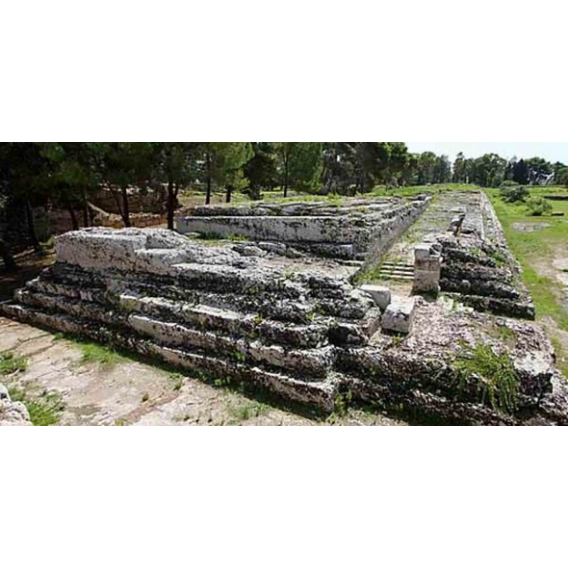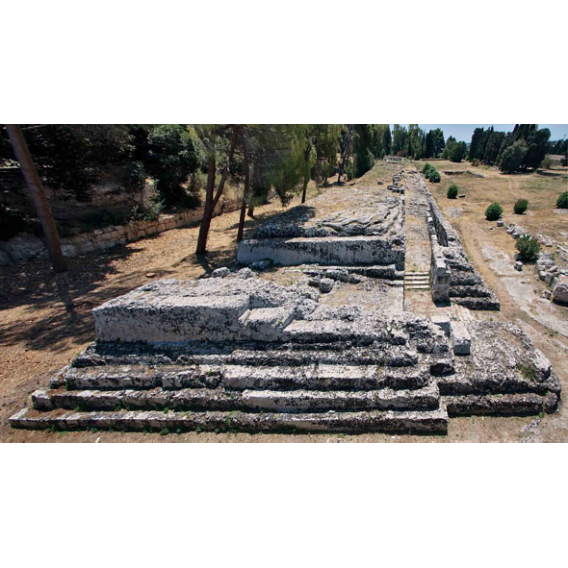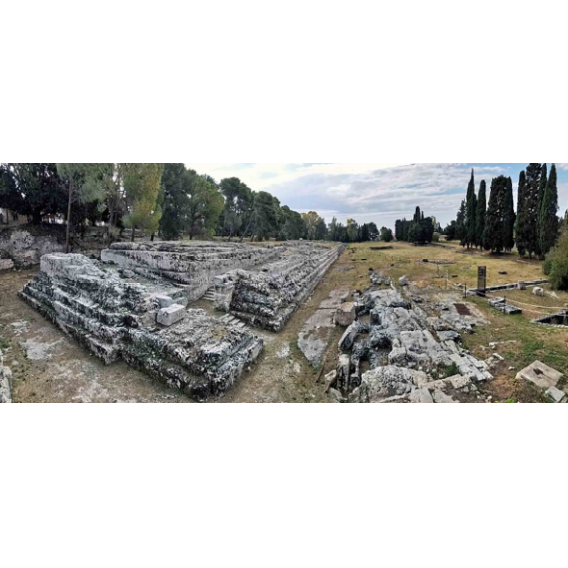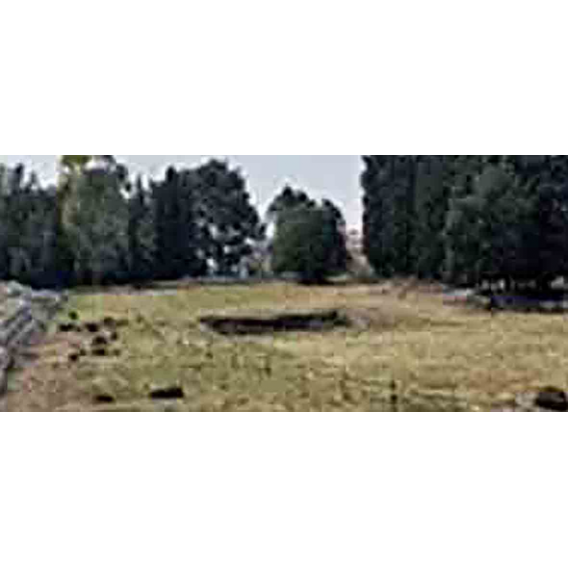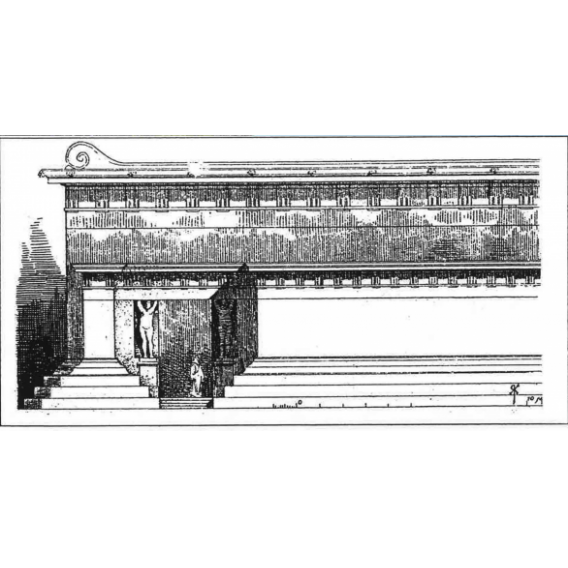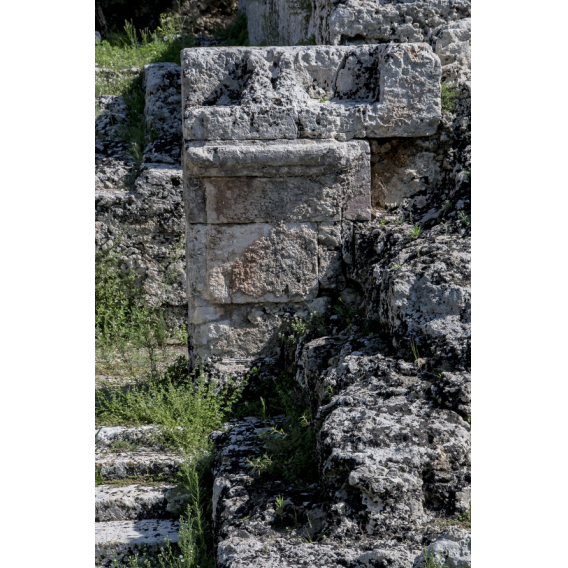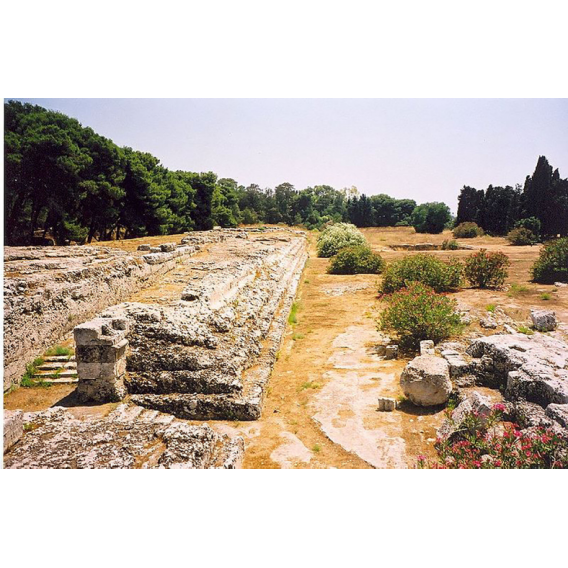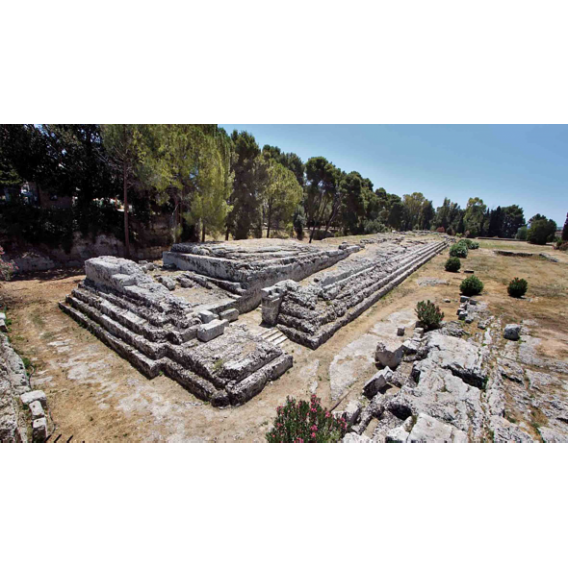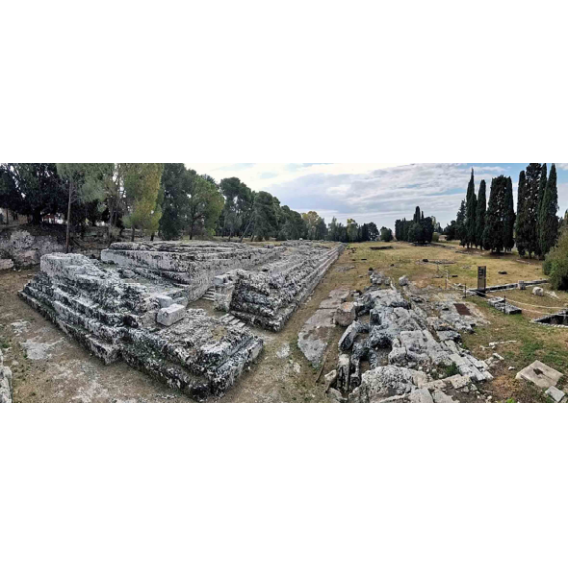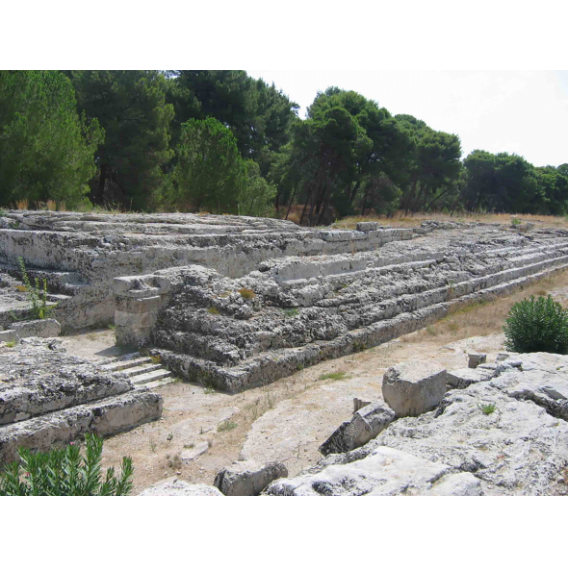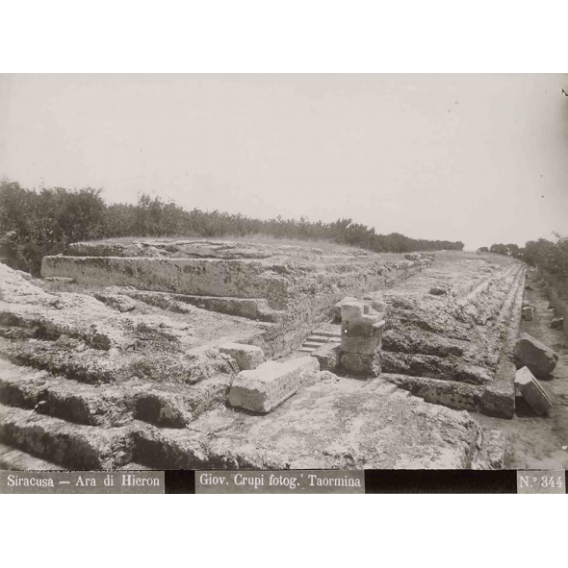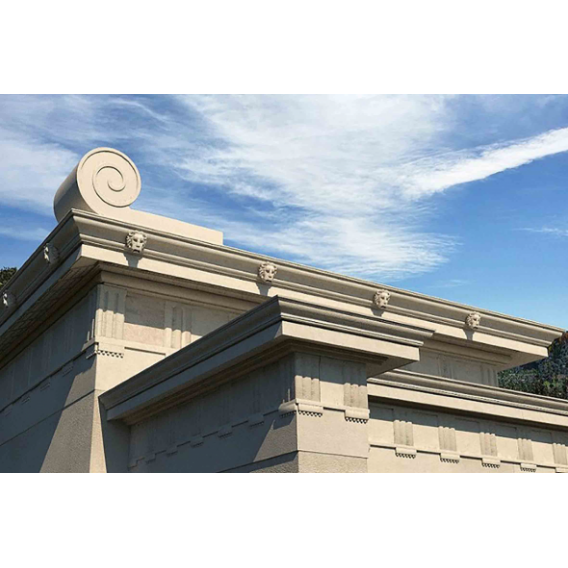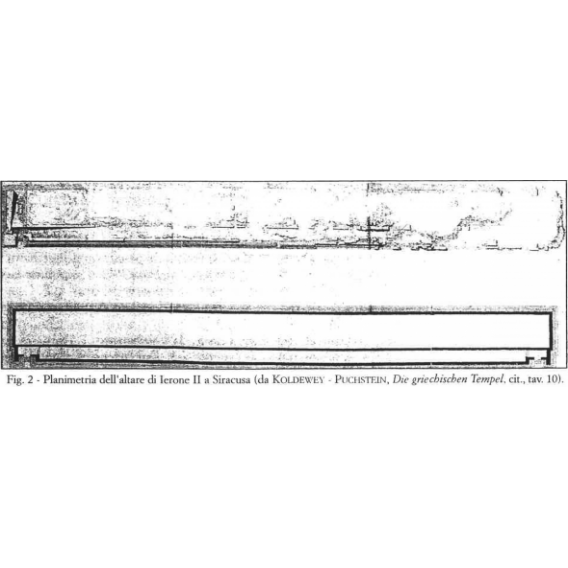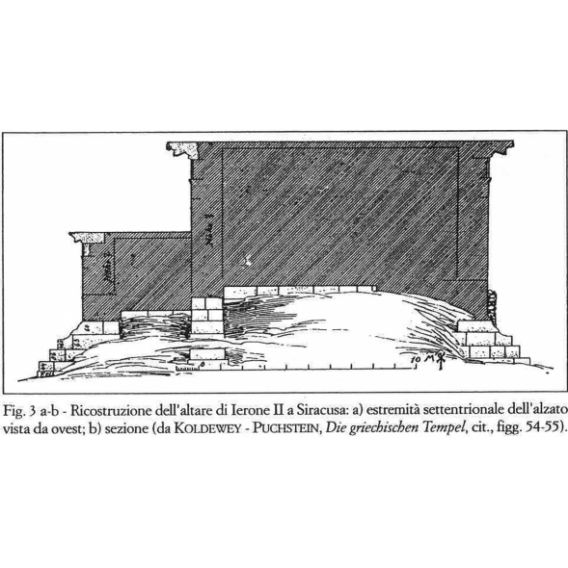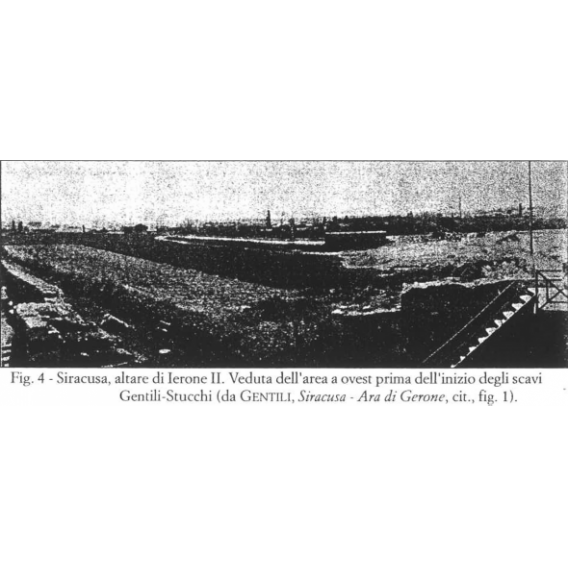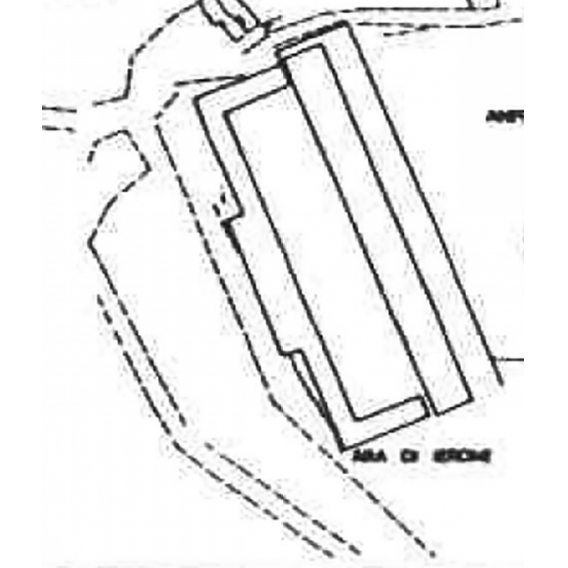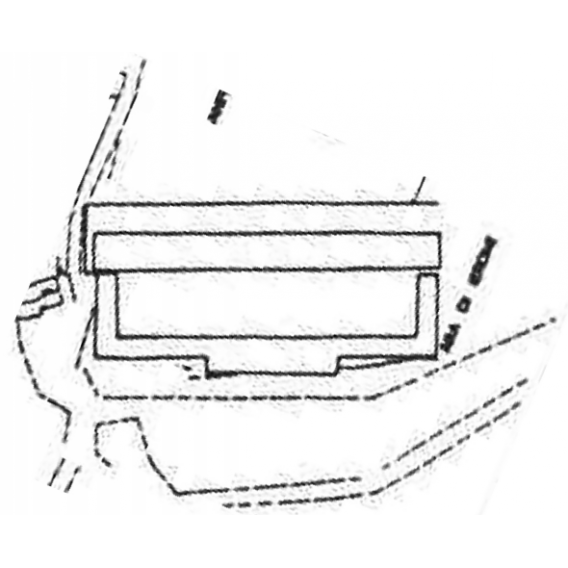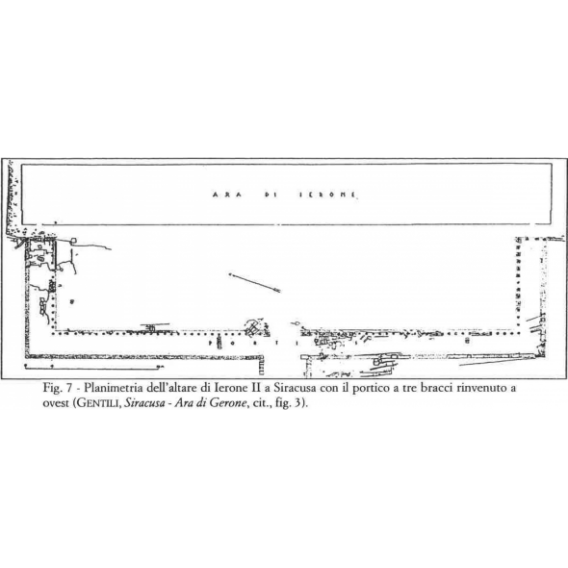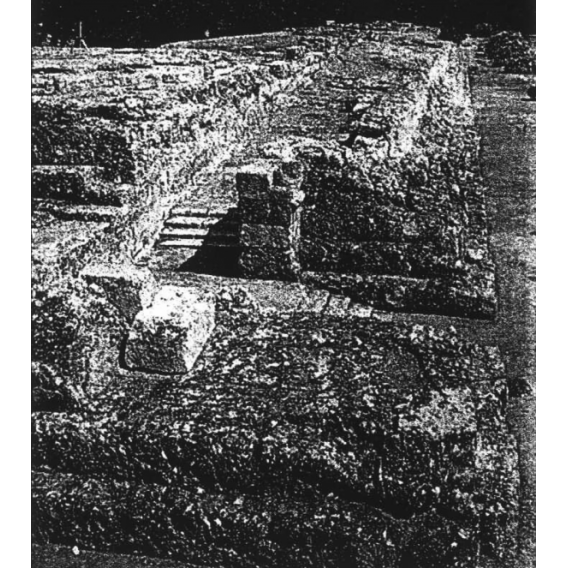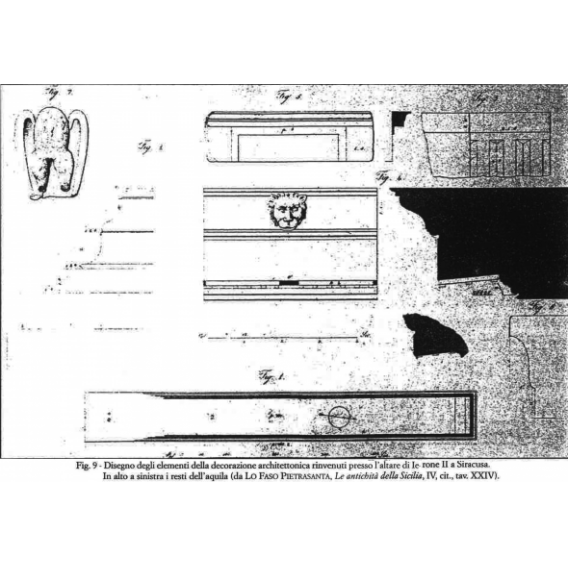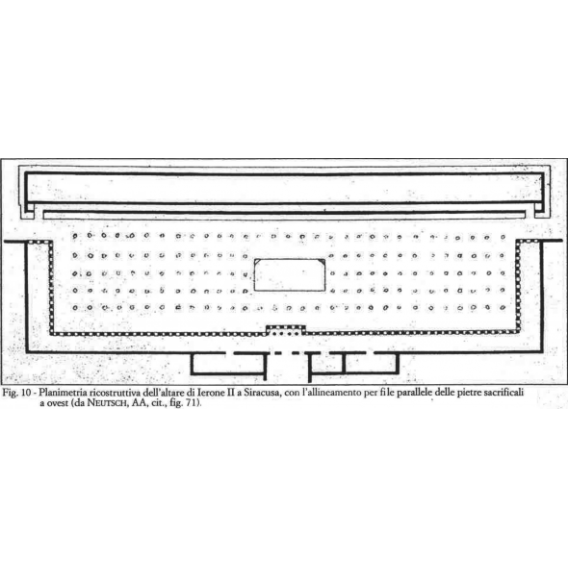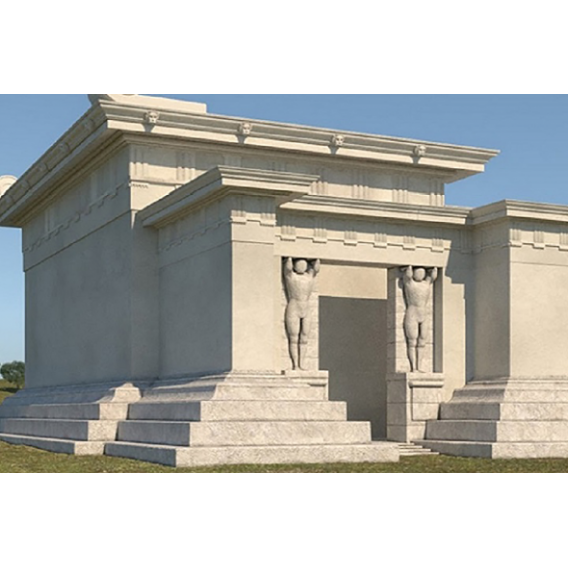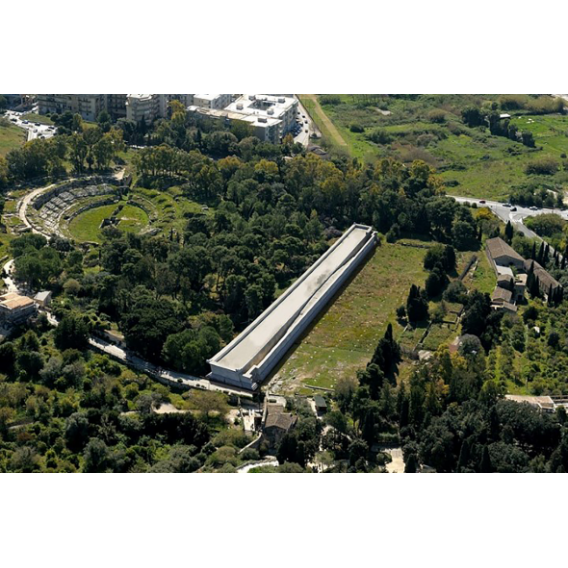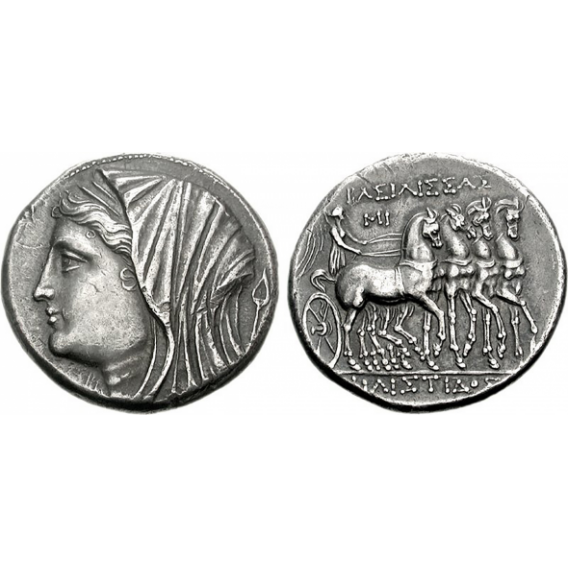Ara di Ierone secondo
Siracusa, l’Ara di Ierone
testi video filmato
Ecatombi nell area dell'altare di Ierone documentazione pdf a cura di Caudio Parisi Presicce

Ara di Ierone II: tratto da Galleria Roma Siracusa documentazione pdf
E' il più grande altare sacrificale greco nel quale si eseguiva l'ecatombe, cioè il sacrificio di 100 buoi, Fu costruito in onore di Giove Eleuterio, per aver aiutato il tiranno a cacciare Trasibulo che voleva impossessarsi del potere. (commento di Lucia Acerra)
Parlando della prosperità della Sicilia nel periodo di Timoleonte e in quello immediatamente successivo, Diodoro ricorda gli edifìci più importanti allora costruiti a Siracusa: tra questi cita due monumenti dovuti a Ierone II: l'Olympieion presso l'agorà e l'altare presso il teatro, che era lungo uno stadio e alto e largo in proporzione. Siamo così in grado di identificare senza possibilità di dubbio l'Ara di Ierone II nel lunghissimo basamento, del quale rimane quasi solo la parte intagliata nella roccia, ancora visibile circa 100 m a sud-est del teatro. Si tratta di un nucleo ricavato dalla roccia (la parte costruita fu demolita dagli Spagnoli nel XVI secolo) lungo 198,40 m, misura che corrisponde approssimativamente alla lunghezza di uno stadio olimpico (192 m), confermando così l'affermazione di Diodoro. La larghezza massima era quella della testata nord (22,60 m), che costituiva uno dei due ingressi (insieme all'opposta testata sud) alla piattaforma superiore. L'ingresso della rampa nord era fiancheggiato da due telamoni: restano i piedi di quello di destra. È possibile che all'altare appartenga anche la statua di satiro, anch'essa con funzione di telamone, trovata nei paraggi e conservata al museo di Siracusa (non è escluso però che essa appartenga al teatro, come l'altra rappresentante una menade.
L'ampia piazza a ovest dell'altare era circondata su tre lati da un portico allungato, costituito da 14 colonne sui lati brevi e da 64 sul lato lungo; questo era interrotto al centro da un propileo. In mezzo alla piazza era una grande vasca, con al centro un basamento, probabilmente destinato a sostenere una statua. Un canale di drenaggio costruito in blocchi si distacca dalla vasca, attraversando il portico. Numerose cavità sulla superfìcie del piazzale erano probabilmente destinate a ospitare alberi: l'area era dunque occupata da un giardino. Il portico, che sostituisce una più antica strada incassata nella roccia (nella quale erano ricavate numerose nicchie votive), fu aggiunto all'altare in un secondo tempo (forse in età augustea). Ignoriamo a quale divinità fosse dedicato l'altare, che è il più grande conosciuto del mondo greco. Si è pensato a Zeus Eleutherios (« liberatore »), al quale, dopo l'espulsione nel 466 dell'ultimo dei Dinomenidi, Trasibulo, fu dedicata una statua colossale, in onore del quale veniva celebrata la festa delle Eleutheria, con il sacrifìcio di 450 tori (Diodoro, XI 72, 2): le dimensioni del sacrifìcio spiegherebbero quelle dell'Ara. .
Altar of Ierone II
Traduzione di Annalisa Giammanco
Talking about the prosperity of Sicily in the period of Timoleonte and in that immediately next, Diodoro remembers the most important buildings at that time built in Siracusa: between these two monuments he quotes Ierone II: the Olympieion in the agorà and the altar near the theatre, which was along a stadium and high and wide in proportion. So we are able to identify without any doubt the Altar of Ierone II in the very long basement, of which remains only the part incised in the rock, still visible about 100 m south-east of the theatre. It is a core obtained by the rock (the built part was demolished by Spanish in XVI century) long 198,40 m, measurement which approximately pays to the length of an Olympic stadium (192 mt), so confirming the affirmation of Diodoro. The maximum width was that of the North head (22,60 m), which constituted one of the two entries (together to the opposite South head) to the superior platform. The entry of the North ramp was flanked by two telamons: they remain of that of right. It is possible that also the satyr's statue belongs to the altar, also it with telamon function, found in the surroundings and conserved in the Museum of Siracusa (it is not however excluded that it belongs to the theatre, as the other one representing one maenad).
The wide square at the west of the altar was surrounded on three sides by a lengthened porch, formed by 14 columns on the short sides and 64 on the long side; this was interrupted to the center by a propylaeum. In the middle of the square there was a big basin, with at the center a basement, probably designed to support a statue. A channel of drainage built in blocks breaks off from the basin, crossing a porch. Several cavities on the forecourt surface were probably destined to lodge trees: so the area was engaged by a garden. The porch, which replaces a more ancient road boxed in the rock ( in which several votive niches were obtained), was added to the altar in a second moment (maybe in the Augustan period). We ignore to which divinity was dedicated the altar which is the biggest known of the Greek world. It was thought about Zeus Eleutherios (the liberator), of whom, after the expulsion of the last one of Dinomenids, Trasibulo, was dedicated a colossal statue, in honour of which Eleutheria feast was celebrated, with the sacrifice of 450 bulls (Diodoro, XI 72, 2): sacrifice dimensions would explain the ones of Ara .
Pianta dell'Ara con il portico antistante
IERONE II
Nacque a Siracusa intorno al 306 a.C. da nobile famiglia. Le sue qualità morali ed intellettuali lo portarono nel 269 a.C. ad essere nominato stratego della sua città assieme ad Artemidoro.
Sposò Leptine da cui ebbe un figlio che chiamò Gelone, in segno di ammirazione per il primo grande tiranno di Siracusa. Governò 54 anni e rese la città ricca e prosperosa. La fortificò e la difese dagli attacchi dei vari nemici, con la collaborazione del suo amico e consigliere Archimede.
Alleato di Roma, attuò con la Lex hieronica un sistema per il pagamento delle decime, che in seguito sarà adottato dagli stessi Romani.
Abbellì Siracusa con magnifici monumenti: nell'Agorà fece innalzare un Tempio a Zeus Olimpico di cui non rimane traccia e, nei pressi del Teatro Greco, per ricordare la cacciata di Trasibulo, fece costruire un'immensa ara nella quale, pare, si sia giunti a sacrificare ben 450 buoi in una sola giornata.
Ristrutturò il Teatro Greco la cui costruzione era iniziata nel 238 a.C. e lo dotò di una tettoia, nei pressi del Ninfeo, con lo scopo di proteggere gli spettatori dal caldo e dalla pioggia.
Alla sua corte vissero Teocrito, primo esponente della poesia bucolica, e Mosco, suo seguace.
Alla morte di Pirro ne ospitò la figlia Nereide che in patria correva seri pericoli e la fece sposare al figlio Gelone. Durante il suo regno alcuni atleti siracusani si cinsero di alloro nelle Olimpiadi alle quali egli stesso non disdegnò di partecipare, riuscendo anche a conseguire alcune vittorie.
Con la sua morte (215 a.C.), la potenza di Siracusa decadde rapidamente.
Traduzione di Annalisa Giammanco
Ierone II
He was born in Siracusa about 306 b. C. by a noble family. His morals and intellectuals qualities took him to be named strategist of his town together with Artemidoro. He married Leptine who gave him a son who called Gelone in honour of big admiration for the first despot of Siracusa . He governed 54 years and made the town rich and prosperous. He strengthened it and defended it from the attacks of the several hostiles, with his friend's cooperation and adviser Archimede. Roman ally carried out with the Lex hieronica (ierone’s law) a system for the payment of the taxes, which will afterwards be adopted by the same Romans.
He beautified Siracusa with magnificent monuments: in agorà raised a temple to Olympic Zeus of which it does not remain any sign and, near the Greek theatre, to remember the Trasibulo banishment, raised a neverending altar where took place sacrifice with 450 bulls per day. He restored the Greek theatre whose building began in 238 a. C. and provided him with a roof, near nymphaeum, with the purpose to protect the spectators from the heat and from the rain.
To his court lived Teocrito the first exponent of the bucolic poetry and Mosco his follower . He lodged Pirro’s daughter Nereide, after her father’s death, because she was in serious danger in her country, and married her with his son Gelone. During his reign some Siracusan athletes took the laurel crown. He himself took part to the Olympiads, winning in some races. The power of Siracusa decayed quickly with his death.
vai a Ierone secondo
Filistide immortalata in una moneta (TETRAGRAMMA SIRACUSA)


